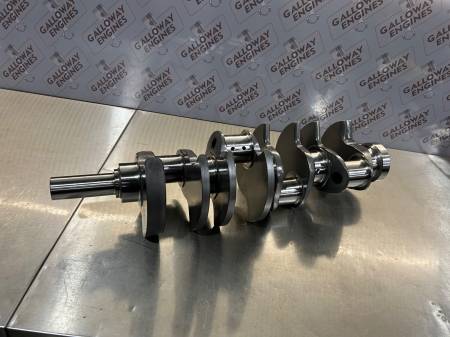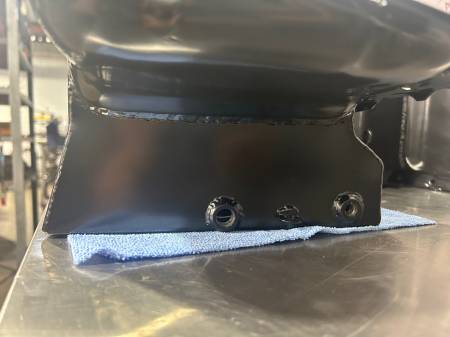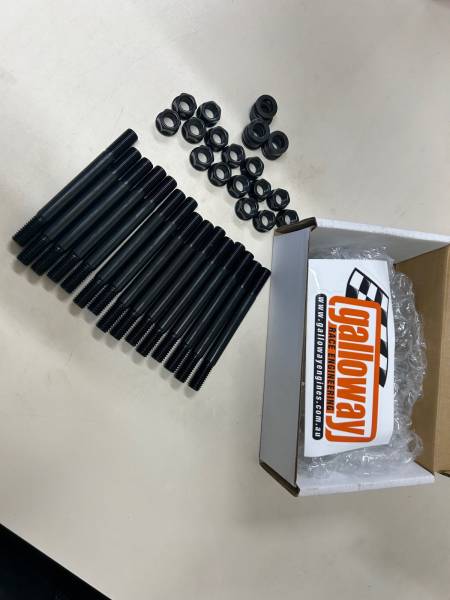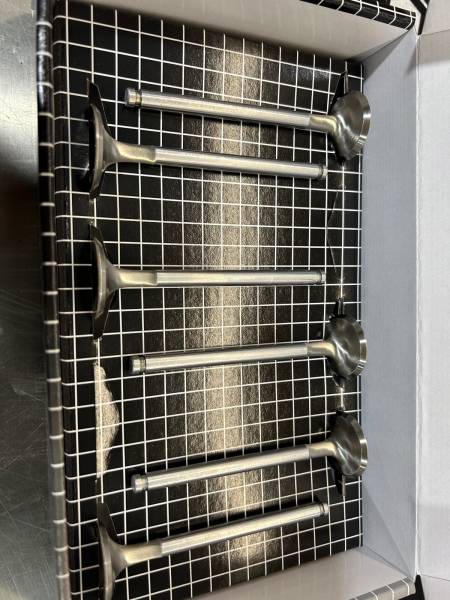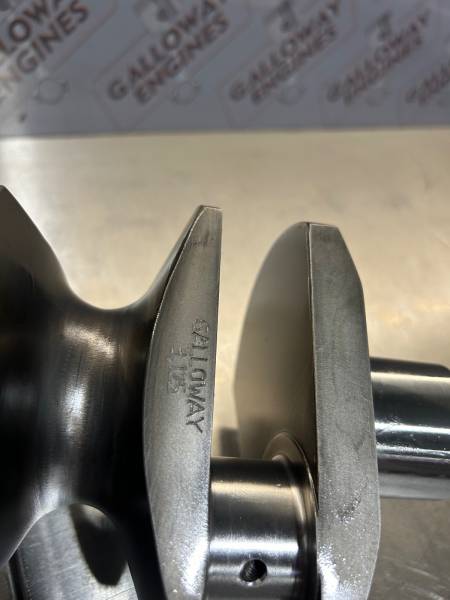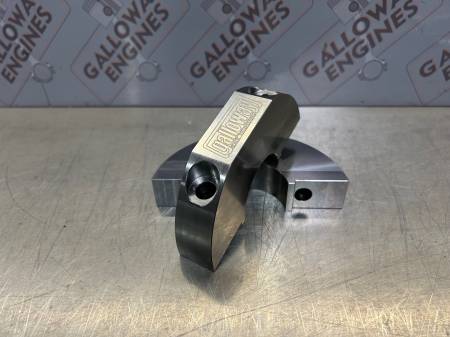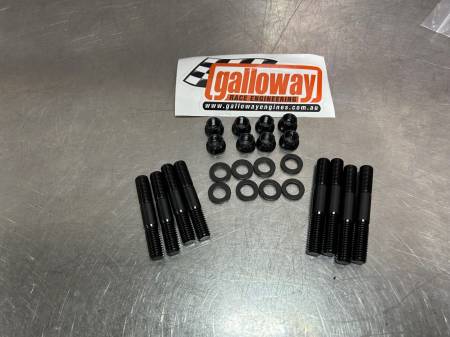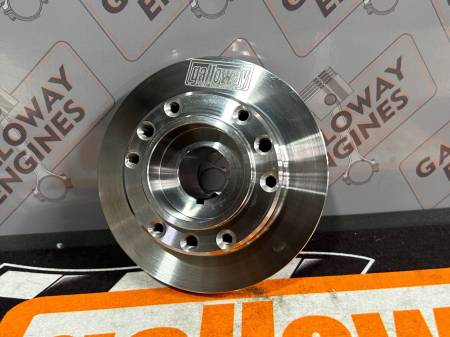Darton Sleeves
Thanks to a new machining centre, fitting Darton sleeves to many different engine blocks can now be done right here in WA.
There is engine machining and there is computerised engine machining and the two are at opposite ends of the scale in the same way that digging a hole with a stone adze and digging a hole with an excavator are diametrically opposed.
Galloway Engines, in Pinjarra, recently invested in a new Rottler four-axis computerised machining centre that now allows them to perform many operations that were not previously available in this State, including the fitment of Darton sleeves and complex lifter bore operations such as fitting bronze guides and even the delicate installation of keyed lifter bores - the latest trend in high-end race engines.
 |
The Nissan SR20 block mounted on the Rottler 4-axis computerised machining centre - the roughing cycle to remove the old cylinder liners has just been completed. The machining centre runs the finish cycle of the SR20 Darton sleeve installation. |
|
 |
Setting the tool size for the finish machining operation. These high precision digital micrometers measure down to 0.0001-inch. |
|
 |
Measuring every sleeve is a crucial part of the process to ensure accuracy. |
|
 |
This is the three-dimensional probe used to set all reference points and measure cylinder blocks for accuracy before any metal is cut. This can measure cylinder bores, lifter bores, decks and many other dimensions. |
There are many reasons for fitting sleeves to an engine block. Firstly, if a bore is damaged or the engine has been bored past its safe limit, then a new sleeve or a set of sleeves is a good, cost-effective option to a new block. Secondly, because performance sleeves, like those from Darton, are build to handle high cylinder pressures, fitting a set of sleeves in an aluminium block often raises the power threshold for a given block. The SR20 block pictured in this article is destined for enough boost to push the car into the 7-second zone - definitely beyond the scope of standard Nissan bores.
The LS engine series from Chevrolet can also benefit greatly from quality sleeves because their standard cylinder liners are very thin and can often only accommodate a .0100-inch overbore before the block in no longer useable. Again, higher power levels are possible with bores of greater intensity. Lastly, due to the thickness of the sleeves, they allow greater bore diameters to be achieved than are possible with stock bores and that means greater displacements from a standard block. The benefits are manifold.
However, fitting new sleeves into an alloy block is a very precise business and it is only possible with the types of tolerances achievable by machines such as the new Rottler. David, from Galloway Engines, spent many hours entering the lines of code required to go through each step of the machining process from removing the original cylinder liner to roughing and final-finishing the block to accept the new sleeves. Tolerances are measured in ten-thousandths of an inch in order to achieve the correct fit between alloy block and cast iron liner. The programming process uses measurements from the OEM blueprints for each particular block being machined and this means that the bore spacings are perfect and, in the case of a V engine, are also at the perfect angle in relation to the crankshaft. This eliminates shifts in bore locations that can occur during the original block machining process. After the block has been milled and the new sleeves pressed into place, the bores are in exactly the right position according to the manufacturer's specifications.
In addition to fitting lifter bores and sleeves, the Rottler machine also has the capacity to blueprint an entire block - referenced from the crankshaft tunnel. So now a block can be line bored and honed, have the camshaft tunnel straightened and bored (and fitted with roller bearings if required), the lifter bores can be milled at OEM or custom blueprint spacings and angles in relation to the camshaft and fitted with bronze bores (keyed if required) and, with some extra programming, blocks can also be lightened for racing applications.
The following photographs document the process of fitting Darton sleeves to a Nissan SR20 block to cope with the power required to run a 7-second pass. Daron sleeves are available for a multitude of engine makes and models, including: GM LS! and LS2; Nissan SR20, RB26, VQ SeriesV6; Honda 4-cylinder; Subaru 4-cylinder and 6-cylinder, Ford 4-cylinder and v* and even Volvo. They are also available as replacements for all aftermarket alloy and cast iron race blocks.
 |
Operated by only highly skilled technicians, here the finish machining cycle is being started on the Rottler machine. | |
 |
A close-up of the Darton sleeve, illustrating the various diameters used and the flats on the flange that line up and interlock when installed. Machining to ultra-fine tolerances is vitally important to ensure the sleeve performs at its optimum. | |
 |
Here the sleeves can be seen dummy assembled to check their fit before the block is removed from the machine. The block will then be thoroughly washed and deburred before the sleeves are fitted with a special Loctite product to ensure good heat transfer to the cooling jacket. A torque plate is then fitted and the sleeves are allowed to set for 24-hours before the block is remounted on the machine, finish bored and faced. | |
 |
A screen shot of just one of more than 20 computerised machining programmes that make up the process of machining a block to accept Darton Sleeves. | |
 |
The new Darton sleeves have been fitted and the torque plate is bolted down prior to finish honing. |
Galloway Engines would like to acknowledge and thank Perth Street Car for the use of the information in their "Pillars of Strength" article.



